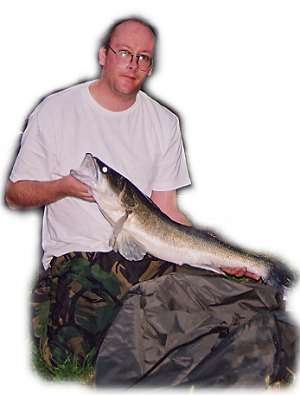The water authority workmen probably didn’t realise the world was about to change forever when they slipped 93 fingerling zander into the newly-dug Great Ouse Relief Channel, near Downham Market, in1963.
|
|
| |
A generation later the alien fish remains one of the least understood of all our coarse species, not to mention the subject of hysteria and even mass culls.
Within a decade, the zander had spread far and wide through the network of interconnected drains and rivers which criss-cross the Fens. While sixties pikers were soon marvelling at the occasional zander caught from the Relief Channel, the fish rapidly established themselves in the neighbouring Ouse and Cut-Off Channel, before spreading to the nearby Middle Level, Sixteen Foot, Twenty Foot, Ramsey Forty Foot, Well Creek, River Delph and Old Bedford.
As predator hunters began targeting the fish for the first time, match and pleasure anglers were seeing a dramatic drop in roach and bream nets. Not surprisingly, the finger was pointed at the zander and a death sentence was passed. Every zander caught was to be killed – by order of the water board.
The decline of the Fens is well documented. Yet it’s doubtful whether zander alone could have brought about such a sharp demise in bread and butter coarse fish without a helping hand from chemical fertilisers leaching in from some of the country’s most intensively farmed arable land. Then there were the savage winter run-offs, which washed fish through the sluices into The Wash in their thousands. Despite evidence that the zander were not the only guilty party, the miscarriage of justice continued until King’s Lynn AA, which controlled the Relief Channel and Middle Level overturned the ruling in the 1980s and ordered that all zander over 6lbs were to be returned.
|
|
| Fenland zed caught early evening |
The National Rivers Authority followed suit soon afterwards, signalling officialdom’s acceptance that the zander were here to stay.
Most zander anglers were returning them by then anyway. And while the debate raged on, they carried on spreading.
By the early 80s they were turning up more than 200 miles away in the River Severn. Midland anglers were frequent visitors to the Fens throughout the 1970s, and some are widely believed to have given the fish a lift home. By early 1990s, the Severn had taken the record away from the Fens for the first time, with Ray Armstrong’s 18lb 10oz fish from the river’s lower reaches.
As well as growing to record proportions on the river’s roach, the fish had also colonised the Warwickshire Avon and Gloucester and Sharpness Canal by now, before finding their way into some of the industrialised canals of the West Midlands.
As recently as last year, British Waterways netted stretches of canal and removed zander, in a bid to stop them spreading. Judging by the Fens, it’s doubtful whether culling will achieve anything more than a temporary halt.
Zander are also present in stillwaters, ranging from Roswell Pits, which are connected to the Ely Ouse; Ferry Meadows Country Park, which is linked to the Nene upstream of Peterborough; and trout reservoir Grafham Water, where water is pumped from the Great Ouse.
|
|
| is slipped back into its Fenland home |
They have also been stocked into Coombe Abbey, near Coventry, and Old Bury Hill lakes, near Dorking. Recent seasons have also seen rumoured catches from the River Thames around Oxford, and if plans to re-open the Thames/Severn Canal ever become a reality the fish will certainly find their way into Father Thames – if they aren’t already in there.
Despite the hysteria, they haven’t eaten everything in sight. Waters which were among the first to be colonised still boast net-busting populations of silver fish. Some are less productive pike fisheries than they were, possibly because of the increased competition for food. Yet pike fisheries which don’t contain any zander have gone just the same way, in areas where cormorants have all-but wiped out the crucial hand-sized silver fish.
The zander record -held since 1998 by Dave Lavender’s 19lb 5oz Fen drain fish – is thought vulnerable by many. The fish reaches weights of 40lbs or more in Eastern Europe, while thirties turn up from time to time in France. Who can say how big they might grow, if left to their own devices in the right water – like pike in some of the more enlightened trout reservoirs.
The jury’s still out on that one.
Coming soon: Part 2 – ‘Tooling Up ForRiver Fishing’













